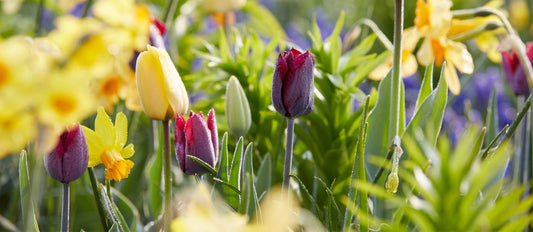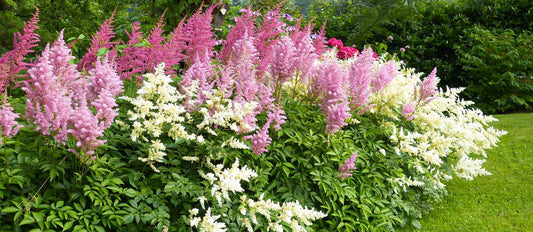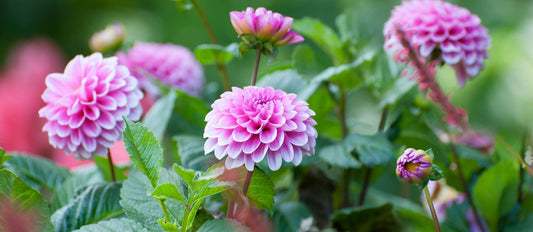After they bloom, all flower bulbs begin the process of producing nutrients for the following year's flowers. That's why tulips in bulb fields are trimmed: the flowers are cut off at an early stage so that all the nutrients stay in the bulbs instead of being used to produce seeds. Flower bulbs in your garden need proper care after flowering and this is what you need to do.
Caring for flower bulbs in the garden after flowering
You want to enjoy your flower bulbs for as long as possible, of course, so it's important to know the difference between annual bulbs and bulbs for naturalising. Annual bulbs are removed from the ground after blooming, while bulbs for naturalising remain in the ground. Each type of bulb requires different care and this article contains advice about caring for your annual flower bulbs. If you want to know more about bulbs for naturalising, then take a look at the article on bulbs for naturalising.
Spring-flowering flower bulbs such as tulips, daffodils and hyacinths are annual bulbs that should be removed from the soil after they bloom. If you want to plant them again the following season, it's important to let the foliage die off. Leave it on the bulb as long as possible, until about mid-July, because the flower bulbs absorb nutrients from the leaves after the flowering period. The flower bulbs need these nutrients to grow and to flower again next year. You can remove stems and leaves after they have completely dried out and gone yellow, while spent flowers can be pruned off straight away. By removing the flowers, you ensure that the flower bulb does not put its energy into making seed heads, but into making the flower bulb stronger. Adding some extra fertiliser will give you extra strong flower bulbs for planting out next year.
You can also remove bulbs from the garden after flowering and buy new ones the following year.
Lifting and storing flower bulbs
Once the leaves and stems have died off completely, you can remove flower bulbs from the soil. This is also known as lifting them. It's a good idea to remove most of the soil after you lift the bulbs. Store the flower bulbs in a dry place otherwise they will rot easily and do not wash them beforehand. After lifting, Bakker recommends keeping bulbs and their offsets* in a cardboard box (or mesh tray). Layer the flower bulbs in the box with newspaper in between each layer. Store the boxes with all the flower bulbs in a cool, dry place such as a cellar.
* Offsets (baby bulbs)
Flower bulbs replicate by producing small flower bulbs—known as offsets—on their undersides. When you lift a flower bulb, remove the offsets along with any old skin and roots. This is also known as peeling the flower bulbs. Just like mature flower bulbs, offsets can be stored. Plant them the following year and they will flower beautifully after a few years.
Planting lifted flower bulbs
After lifting and caring for spring-flowering flower bulbs, you can put them back into the soil in autumn. Summer-flowering flower bulbs can then be planted again in spring. Tip: Plant flower bulbs in a different spot to the previous year, to avoid creating a nutrient deficiency and to reduce the chance of bulbs becoming diseased.
This is how to plant your lifted flower bulbs:
- Make sure that the flower bulbs are planted deep enough, otherwise they may dry out. Plant flower bulbs two to three times as deep as the height of the flower bulb. For instance, you should plant flower bulbs with a height of 5 cm at least 10 cm, but preferably 15 cm deep.
- For the most attractive effect, spread the flower bulbs in groups in the garden.
- With small flower bulbs, the top or bottom is not so important when planting, but larger flower bulbs, which clearly have a top (tip) and root base, should be planted with the roots down and the tip up.
- Water is important for the development of the flower bulb's root system, so keep a close eye on the moisture level of the soil. If it hasn't rained within a few days of planting the flower bulbs, give them some extra water.




